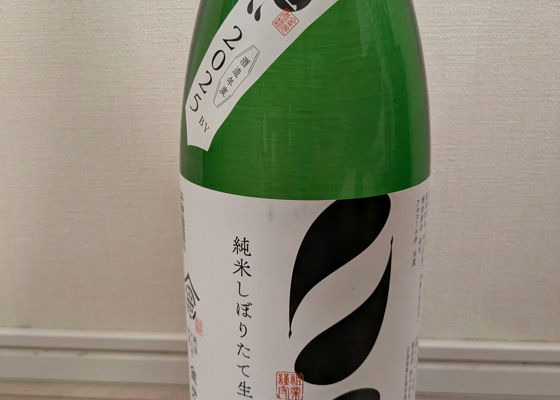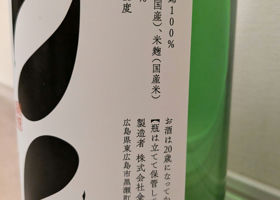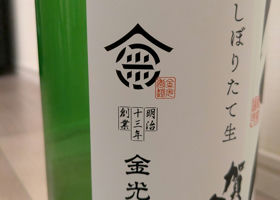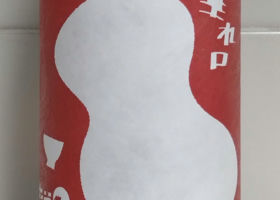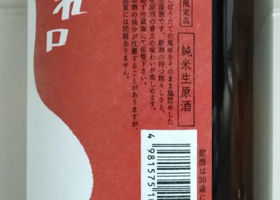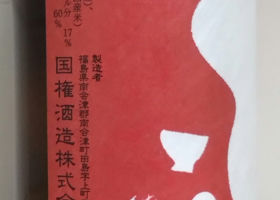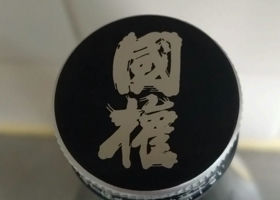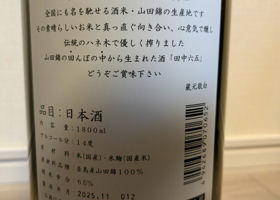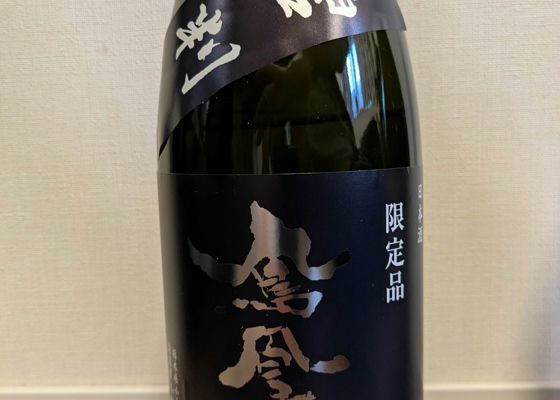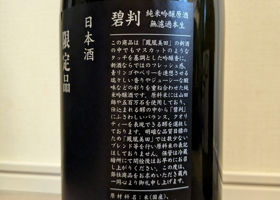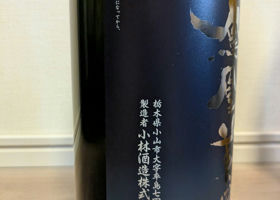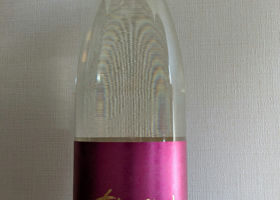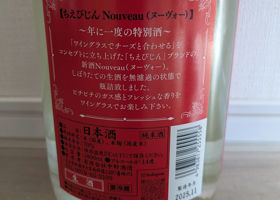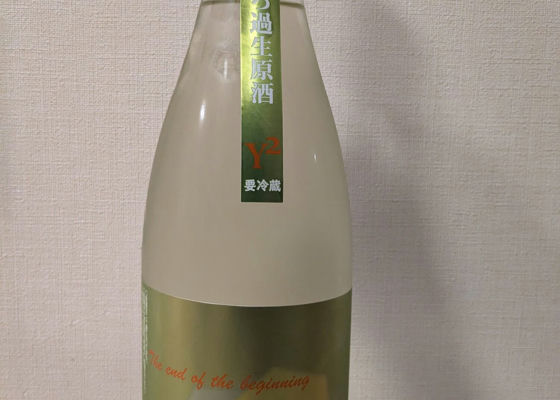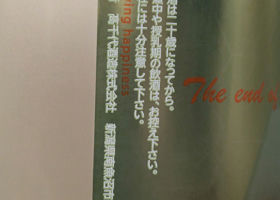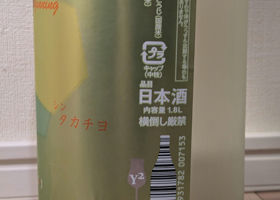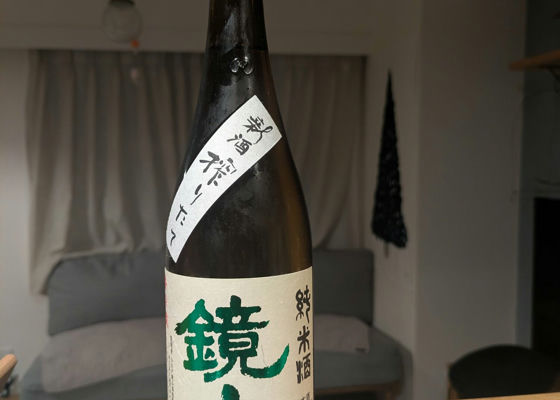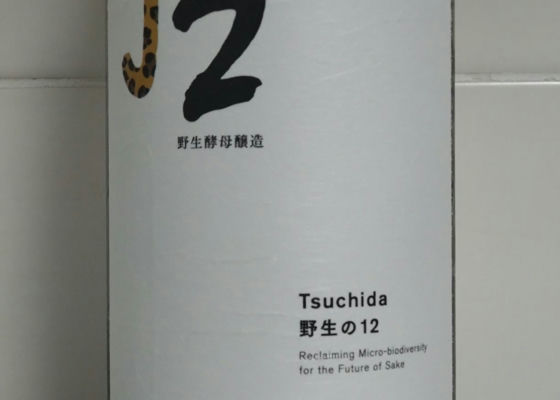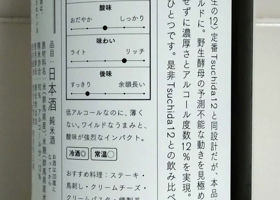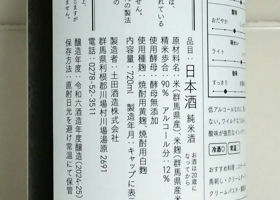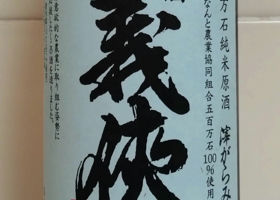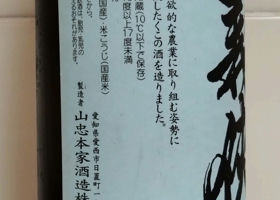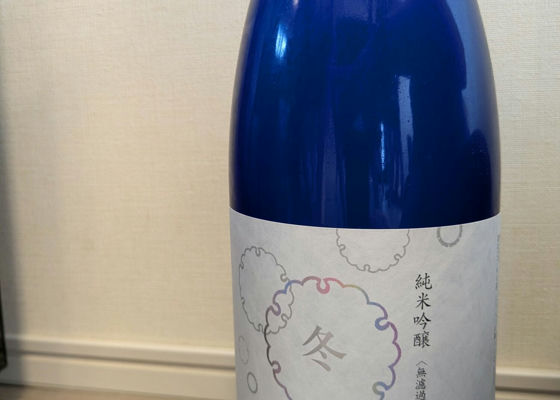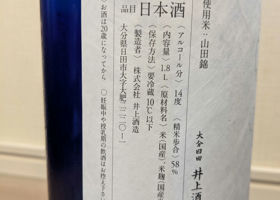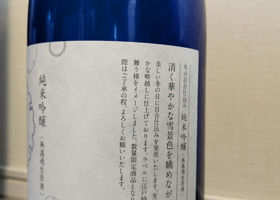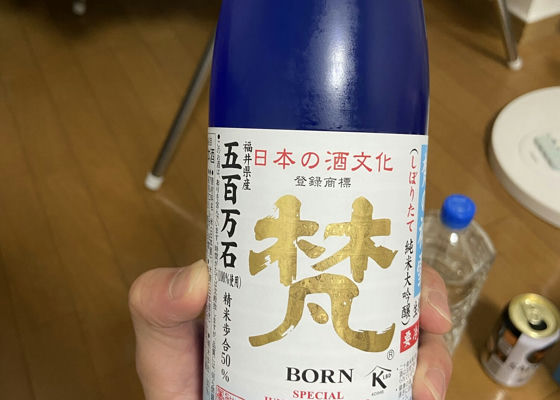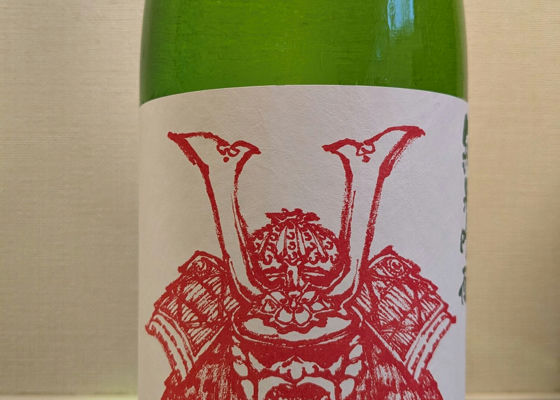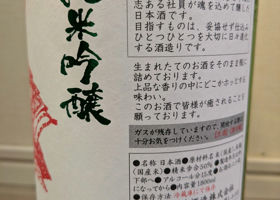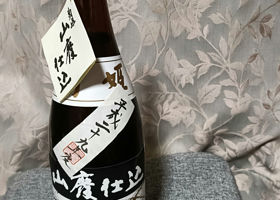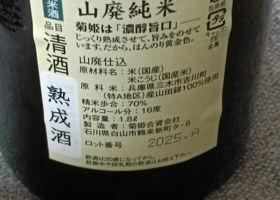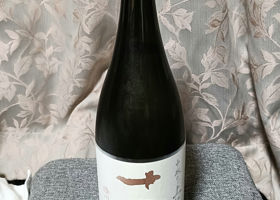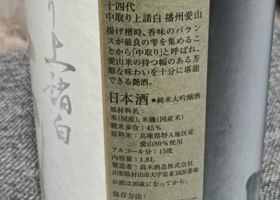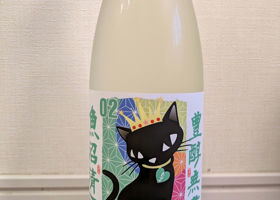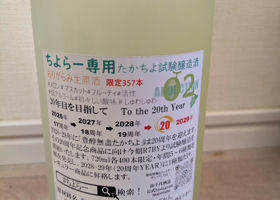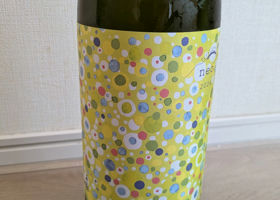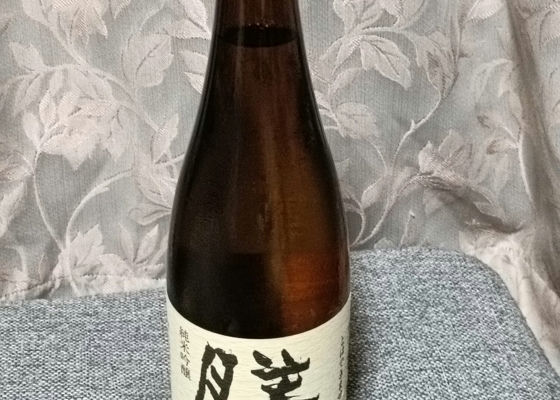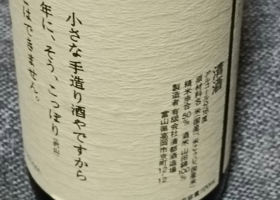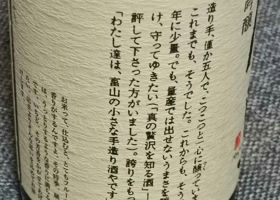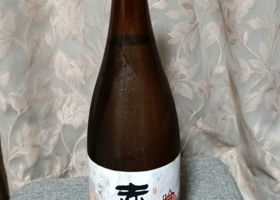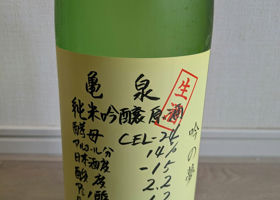Timeline
もよもよThis is the new Kamo Kanehide sake I have been looking forward to. I feel like I've been drinking it a lot lately. The lady at the sake shop told me it was fruity and delicious, so I had high expectations. The specs are Hiroshima's Hachitan-Nishiki and the rice is 60% polished. The alcohol content is 16%.
A bit carbonated when opened. A mixture of appleiness, peach, citrus, etc. The taste is refreshing without being too sweet. Simply delicious.
It seems to go well with a variety of foods. Maybe cold dishes like sashimi or cheese would go well with it. もよもよThis is one from the Shiraito Sake Brewery in Itoshima, a major producer of Yamada-Nishiki. The brewery is located in a Yamadanishiki rice field, and the rice is polished to 65%, so it is called Tanaka Rokuo. The alcohol is low at 14%.
Taste-wise, it is very delicious with a slightly mellow sweetness, umami, and fruity flavor! It has a mild melon taste at first, and then when you taste it, it tastes somewhat like a grape. There is no alcohol or bitterness, so it leaves a delicious taste in the mouth.
According to the liquor store, it is "the ultimate futyu sake. It is the kind of sake that you want to have by your side at all times, or to put it in a more modern way, it is a good sake in general. Indeed, it is delicious. もよもよThis sake is brewed by selecting the best sake mash for Heki-ban in Houou Mita. It is a rare sake among Hououomida, blending Yamadanishiki and Gohyakumangoku. It is said to be a sake with a full flavor of muscat or berry fruits.
When you drink it, you will find that it has a robust and rich flavor. It has acidity and sweetness, and tastes like muscat or a little white wine. It is not too sweet.
It seems to go well with any kind of food. It might be good with slightly thick simmered dishes. もよもよNouveau means new wine in French. The concept of this new sake is "to be paired with cheese in a wine glass. It is a junmai-shu with a rice polishing ratio of 70%, bottled freshly squeezed and unfiltered. The price range is also very wallet-friendly.
The taste is refreshing and light. The 14% alcohol content keeps the cup going. The aroma is wine-like. However, when you drink it, the acidity is a little weak. It has a melon sweetness and aroma, so it has a young white wine-like quality.
I wonder if it would go well with carpaccio or white fish sashimi. The label says to pair it with cheese, and it seems to go well with that too. Takachiyoシン・タカチヨ Y2-TYPE【終】The end of the beginning 無ろ過生原酒原酒生酒無濾過 もよもよShin Takatsukichiyo is a low-alcohol sake type with the concept of a daytime-only sake. It is interesting to see the variety of things they are doing.
It tastes like a combination of orange and white grapes, a modern sake with juicy sweetness and refreshing acidity. 12% low alcohol, some people may think it is a light, sweet wine.
These might be good with nuts or Camembert cheese. As it is, it is treated like a sweet white wine. It was insanely delicious. gucchi523It has a rich pear-like sweetness with a hint of acidity.
I can taste the firm rice flavor, but it is not too heavy. Kakunoi冬の百合仕込み 純米吟醸 無濾過生原酒純米吟醸原酒生酒無濾過 もよもよYuri Brewing" must be a sake with special feelings, given that it is named after the brewery's head brewer. The concept is to make sake with local rice and water, and they use brewing water pumped up from 150 meters underground. The production volume is also extremely small, with only about 200 kilograms of sake brewed, and the customizability that is the strength of the small rods allows them to push the uniqueness of the brewery that they are particular about to the forefront. This is a winter-only sake.
Although not stated in the specs, the sake has a negative sake degree, which is rare for a sake brewed with yakumi. In fact, the citrus acidity and cleanness were my first impression. It is a sharp and easy-drinking sake.
I purchased this sake based on the "maiyaki" pop-up at a liquor store I trust, and it was actually delicious. It seems to go well with a wide range of dishes. 酒太郎A sake that can be drunk cold while it is not yet cold at the bottom of the bottle. It is well-balanced, so it seems to go well with all genres of sake. It has a rather distinct flavor, so it would probably go better with oden and sashimi. AKABU新酒 純米吟醸 NEWBORN(中取り直詰生酒)純米吟醸原酒生酒中取り もよもよThis is the last of Akabu's new sake three-step series. 3 years in a row we have received different new sake, and we finally complete the three. Akabu's new sake, Nakadori, directly bottled, Junmai Ginjo, and everyone can agree on the specs.
When you drink it, it is a clean and beautiful sake, not too sweet. It tastes melon-like, which is typical of Akabu, but it also has a peach-like sweetness. The acidity is not too strong. It is very tasty. It also has the juiciness of raw sake.
I think they used Iwate yeast, but I think Akabu has a different taste from the basic low acidity and gorgeous fruity. If it were a dish, I think it would go well with creamy potage or gratin. Takachiyoちよらー専用 試験醸造酒 無ろ過生原酒 おりがらみ ABDUCTION02原酒生酒無濾過おりがらみ もよもよThis is a limited series for the 20th anniversary of the "Takachiyo" brand, a test brew in small tanks of about 400 bottles of 720 ml. The one that was popular there will be established as a regular sake as one of the types for the 2028-29 season. There is a note on the label warning against spewing, so we expect it to be highly carbonated. The alcohol content is quite low at 10%. So this one has a melon and muscat image.
When opened, the carbonation is quite strong, so if you open it normally, you will have to be careful not to spill it. The taste is quite light and easy to drink, a bit like a creamy melon soda. I don't think I can detect much muscat.
We had it with many people, and they gave it a very high rating. People who are not used to drinking sake were especially into it. I don't know which one will become a regular sake, but I'm looking forward to it. TedorigawaTedorigawa neo. 2024 山廃 純米吟醸 雄町純米吟醸山廃生詰酒 もよもよYumiko Kodama, who moved here from Tokyo, was in charge of this neo. I wonder what it will be like, Yamahai made with Omachi, which is easily soluble in water. By the way, although it is not on the label, it is said to be fresh-pressed.
The slight bubbles and low alcohol content give it a clean and refreshing taste. It is quite light for an Omachi Yamahai sake. It is complex with creaminess and acidity, but it tastes like Calpis mixed with melon, apple, and pear.
The low alcohol content makes it easy to drink, and it is easy to drink. It seems to go well with refreshing dishes. It would certainly go well with marinades. もよもよKameizumi is a pineapple-like, fruity, penetrating sake made with CEL-24 yeast. This is a series of different rice varieties, and uses Gin-no-Yume developed in Kochi.
As for the taste, it is as fruity as ever. It also has a mild sweetness and a honey-like flavor. It is a fruity pineapple honey juice without bitterness.
It has a taste that sets it apart from others, yet it is not sharp with strange habits, and even beginners will say it is delicious. No wonder it is so popular. RecommendedContentsSectionView.title
